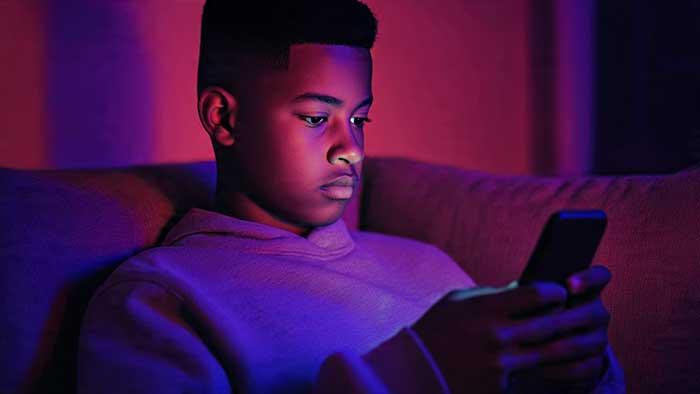For many Nigerian parents, one of the most shocking and painful moments is catching a child watching inappropriate content online, whether it’s sexual videos, violent clips, pornography, or disturbing material.
The first instinct is usually to shout, panic, threaten, or confiscate every device in the house.
But reacting emotionally can sometimes do more harm than good.
Children today are growing up in a digital world where inappropriate online content can appear accidentally or intentionally—through curiosity, peer pressure, or online traps like auto-play, misleading thumbnails, or links shared by friends.
So, if you ever find your child watching something inappropriate online, here is a calm and practical way to respond without fear, shame, or daily battles.
Step 1: Stay Calm (Even If You Feel Shocked or Angry)
Reacting with anger may cause:
Fear
Shame
Secretive behaviour
More sneaking and hiding in future.
Take a deep breath and remind yourself: This is a moment to teach, not just punish.
Step 2: Determine If It Was Accidental or Intentional
Understanding whether your child stumbled on pornography accidentally or intentionally searched for it helps you respond appropriately.
Younger kids (4–8) may have clicked accidentally or followed autoplay.
Pre-teens (9–12) might explore out of curiosity or peer influence.
Teenagers (13–17) might intentionally search due to hormones, peer pressure, or curiosity about sexual content.
Knowing the “why” helps you handle the situation wisely—not all exposure to inappropriate videos should be treated the same way.
Step 3: Talk to Your Child Calmly, Not Accusingly
Open the conversation without blaming them. Try saying:
“I noticed something on your screen earlier. Can we talk about it?”
“Do you understand what kind of video that was?”
“Did someone show it to you, or did you find it yourself?”
Listen before jumping into lecture mode. This builds trust and helps address whether this was accidental or intentional exposure to pornography or other harmful content.
Step 4: Explain Why It’s Inappropriate (Age-Appropriate Explanation)
Use simple, age-based explanations:
For younger kids: “Some videos are not meant for children. They can confuse you or make you feel scared.”
For pre-teens: “Your mind is still developing. These videos can give wrong ideas about bodies, love, and respect.”
For teens: “Pornography or violent videos can shape how you think about relationships and people—and not always in a healthy way.”
Make it a teaching moment about digital safety, body respect, and healthy curiosity.
Step 5: Set Digital Boundaries (Not Just Punishments)
Instead of: “No phone forever!”
Try: “We need safer digital rules so this doesn’t happen again.”
Practical actions:
Use parental controls like Google Family Link (Android) or iPhone Screen Time
Limit unsupervised late-night browsing
Disable YouTube autoplay and restrict explicit searches
Encourage device use in shared spaces
Review search history and installed apps regularly
(Consider linking to your article on “How to Set Parental Controls on Android & iPhone” here)
Step 6: Rebuild Digital Trust — Not Fear
Let your child know:
They can always talk to you about confusing or disturbing things online.
Curiosity is normal, but exposure to inappropriate content is harmful.
Mistakes are chances to learn not reasons to hide
Children who feel shamed are more likely to hide future behaviour.
Step 7: Continue Ongoing Digital Education
This shouldn’t be a one-time warning. Keep talking about:
Body respect and privacy
Online predators and risky sites
Peer pressure to share or watch explicit content
Digital responsibility
How to walk away from harmful or pornographic videos shared by friends
Encourage them to ask questions rather than explore unsafe content secretly.
Step 8: Provide Safe Alternatives
Introduce age-appropriate educational content
Suggest wholesome shows, documentaries, or creativity apps
Teach them how to exit unsafe websites (“Close the tab and come tell mummy”)
What NOT To Do
Don’t shame them (“You are dirty!”)
Don’t panic publicly or embarrass them in front of others
Also, don’t assume they are “spoilt” or “corrupted”
Don’t focus on punishment alone without education
Don’t label them negatively—it can affect their self-worth
Conclusion: It’s a Teachable Moment, Not the End
Finding your child watching inappropriate online content doesn’t mean you have failed as a parent. It signals the need for stronger digital guidance, open communication, and safer tech boundaries.
Also read: 7 Indoor Activities, Screen Time Alternatives For Toddlers
When handled calmly, this moment can become a turning point toward safer, more intentional screen habits.
FAQ Section
1. Should I punish my child for watching inappropriate videos?
Punishment without understanding causes fear and secrecy. Combine gentle discipline with digital guidance.
2. What if my child says a friend showed them pornography?
Discuss peer pressure and teach them to walk away or come to you when uncomfortable.
3. Is teenage curiosity about sexual content normal?
Curiosity is common, but must be guided with responsible conversation and age-appropriate education.
4. How can I prevent this from happening again?
Enable parental controls, monitor screen time, set family rules, and openly discuss online safety.
Find more parenting resources here




